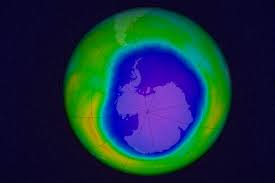Ndimuh B. Shancho
Human health is inextricably linked to the health of the Ozone layer, a delicate layer of gas that shields the Earth from harmful sun rays commonly known as the ultraviolet rays. Every healthy human being is undoubtedly a consequence of clean air, potable water, adequate food, moderate temperature and a stable climatic condition. The successful realization of these is indispensably dependent on the layer of ozone; the thicker the better.

The same sun that contributes in building stronger bones, providing vitamin D and precipitating photosynthesis produces harmful rays that it will be difficult if not impossible for any living thing to survive with if not protected by the ozone layer. In the midst of this, humans have, through industrial and socio-economic activities, advertently or inadvertently released harmful gases that directly or indirectly contributed to the gradual depletion of the ozone layer. This has limited the layer’s ability to absorb the harmful sun rays and the eventual outcome has been severe weather changes including storms, flooding, droughts and more, increasing skin cancer and eye diseases, rising temperatures, drying off of streams and other water sources amongst others.
Meat Consumption, Consuming Cameroon’s Climate Change Fight
Limbe Landslide Victims in ‘Siberia’, One Year After
In a bid to ameliorate this plight or better still, protect human health, all 197 UN Member States, in September 1987 adopted the Montreal Protocol to protect the ozone layer by phasing out the production and consumption of ozone-depleting substances. This culminated in the designation of September 16 by the United Nations General as the International Day for the Preservation of the Ozone Layer.
This year’s edition of the day is being observed under the theme for this year, 32 Years and Healing, celebrates over three decades of international cooperation to protect the ozone layer and the climate under the Montreal Protocol. The theme no doubts indicates that this years’ event is dedicated to recognizing parties that have contributed in one way or the other in fighting against ozone depletion.
Though the ozone layer is showing signs of continuous recovery and is likely to heal fully by 2060, according to scientists, there is still need for more concerted efforts locally, nationally and internally to protect and restore the atmospheric shield and by extension mankind on earth.






